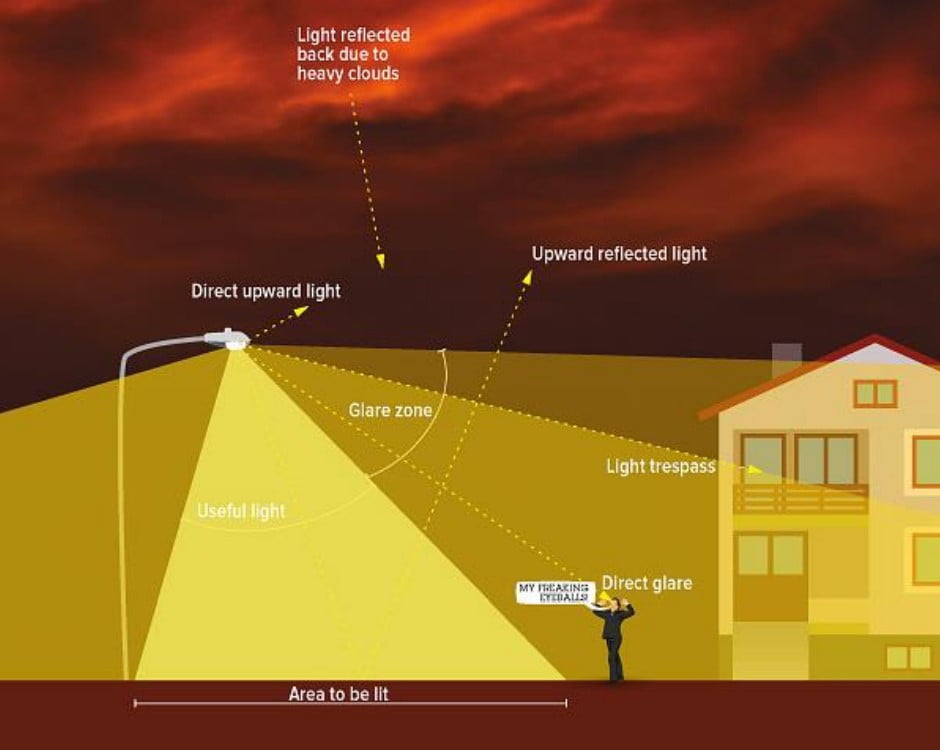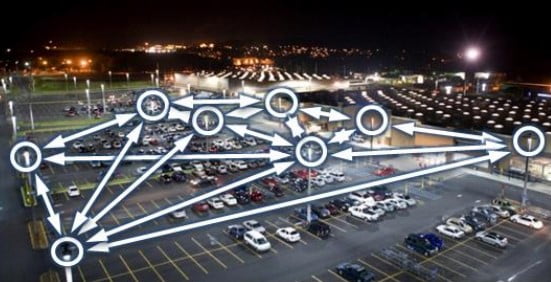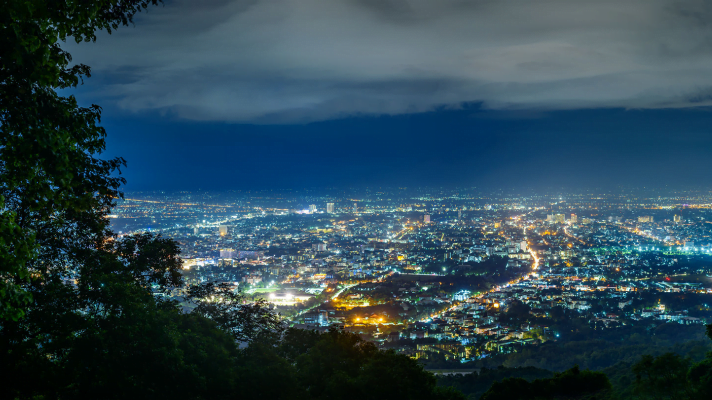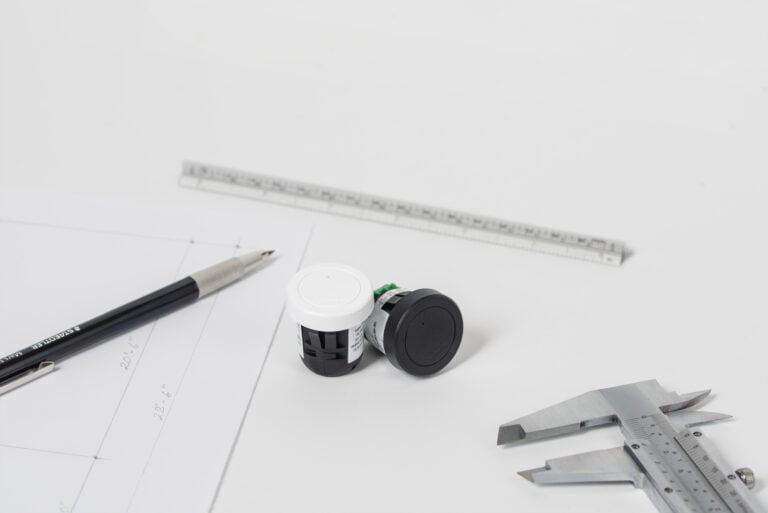The day is coming to an end, and you want to turn in for the night. But before that can happen, your dog scratches at the front door to go out one last time. As you walk down the street waiting for your pup to find the perfect spot, you notice the overhead streetlights illuminating the sidewalk. Though they are helpful in lighting the way, they start hurting your eyes with the excessive glare they are giving off. You don’t think too much of it because that’s just the way these types of luminaries are, but do they have to be? Could they be improved upon?

Purchasers of these luminaires are typically non-lighting professionals, frequently relying on others for guidance and are often price conscience, disproportionally valuing low cost over highest value. This can cause light pollution which can include excessive brightness causing visual discomfort, light falling where it is not intended or needed, brightening of the night sky over inhabited areas, and confusing and excessive groupings of light sources.
To combat these negative effects, IES, IEA, and Cree Lighting have put together the Five Principles of Responsible Outdoor Lighting to help educate the industry and apply the principles for better outcomes in our outdoor environments, while implementing highest valued solutions. The Five Principles include: Useful, Targeted, Low Light Levels, Controlled, and Color.
1. Useful
All luminaires should have a clear purpose. Before installing or replacing a luminaire, determine if it is needed. Consider how the use of light will impact the area, including wildlife and the environment. Light pollution can severely disorient migratory birds, negatively impact the life of nocturnal animals, and can confuse sea turtle hatchlings. Try using reflective paints or self-luminous markers for signs, curbs, and steps to reduce the need for permanently installed outdoor lighting.

2. Targeted
The light should be directed only to where it is needed. Use shielding and careful aiming to target the direction of the light beam so that it points downward and does not spill beyond where it is required. Try using optical control over shielding to reduce glare and energy consumption if you are able.
Skyglow Comparison 2008 vs. 2012

3. Low Light Levels
Light should be no brighter than necessary. Use the lowest light required. Be mindful of surface conditions as some surfaces may reflect more light into the night sky than intended. Using lower main beams for light posts reduce glare and potential spill light. Using this method in a company parking lot ensures there is a bright enough amount of light during work hours, so employees can get to their cars safely. Once the last employees leave, the luminaires can be dimmed. By doing this you have a better lumen maintenance by not over lighting your application.

4. Controlled
Light should be used only when it is useful. Try to use controls such as timers or motion detectors to ensure that light is available when it is needed, dimmed when possible, and turned off when not in use. Using these types of controls will save you more money per year.

5. Color
When possible, use warmer color lights. Limit the amount of shorter wavelength (blue violet) light to the least amount needed. To be dark sky approved and help the sea turtle hatchlings and other wildlife, luminaires must be 3000K or lower CCT.

By utilizing these Five Principles, lighting professionals will be able to design and implement a complete project that minimizes lighting energy use, provides good visibility, and most importantly minimizes light pollution.
FUN FACT:
In 2009, CREE LED Lighting partnered with The Bureau of Street Lighting to deploy the City’s first LED streetlights throughout the City of Los Angeles. These lights save approximately 40% to 60% of energy from existing fixtures while providing the same amount of illumination. To date, over 150,000 CREE LED Streetlights have been installed in Los Angeles since 2009.
Thanks for reading and stay tuned for next month’s blog post!
About Western Lighting and Energy Controls
Western Lighting and Energy Controls is one of the leading Lighting, Controls, and Energy Management manufacturers’ representative agency in Southern California.
In business for over two decades, Western Lighting and Energy Controls offers an unparalleled level of service and support through dedicated teams. These teams work to ensure that project requirements and unique business needs are delivered on time and within budget. With its uniquely proactive approach, Western can serve customers in a way that achieves maximum growth and success. Western Lighting and Energy Controls has been an employee-owned company through an Employee Stock Ownership Plan (ESOP) Trust since 2019. To learn more about Western Lighting and Energy Controls, visit www.westernlightingandenergycontrols.com.
For more information, contact us here at Western Lighting and Energy Controls
We’re on social media!
Get all the Western LEC news, updates, and more on your favorite channel:





